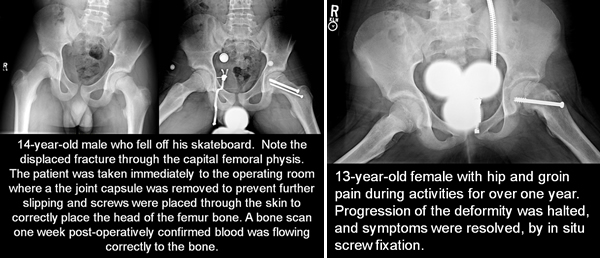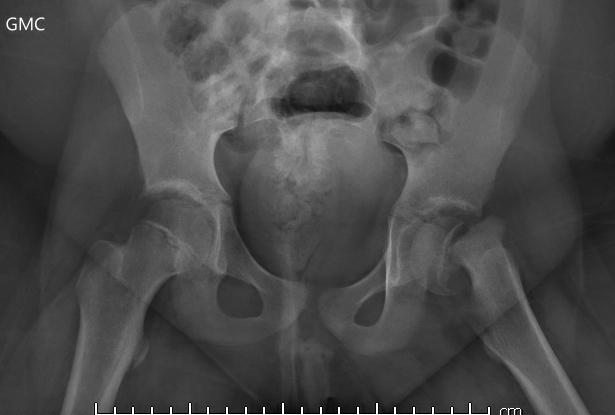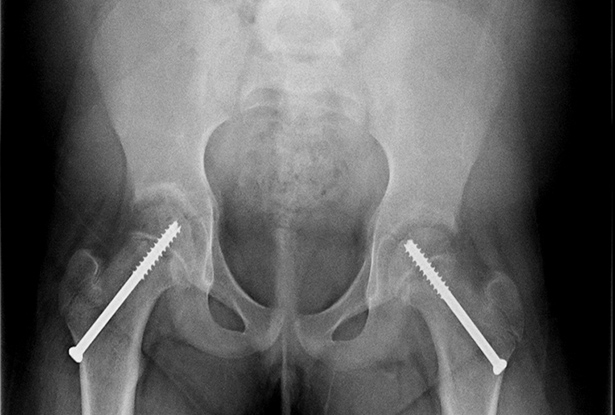Pediatric Hip Conditions
- Developmental Dysplasia of the hip (DDH)
- Slipped Capital Femoral Epiphysis (SCFE)
- Legg-Calve-Perthes Disease
- Femoroacetabular Impingement
- Labral Tear
- Iliac Apophysitis
- AIIS avulsion fracture
- Hip Flexor Tendinitis
- IT Band Syndrome/Greater Trochanteric Bursitis
- Sacroiliitis
- Avascular Necrosis
Developmental Dysplasia of the Hip is also known as Congenital Dislocation of the hip, Neonatal Instability and Acetabular Dysplasia. During the last trimester of pregnancy, there is less space in the womb resulting in more pressure on the hip joint and stretching of the ligaments. A baby’s hip socket is most shallow at birth and deepens rapidly during the first year of life. This is why quick diagnosis and treatment are critical to the successful treatment of hip dysplasia. Occasionally, mild hip dysplasia will go unnoticed until early adulthood resulting in instability and/or early arthritis due to the increased pressure on the cartilage.
- Family history
- Breech presentation
- Female gender
- First born
Babies who are in a breech position during the last trimester have an increased stretch on the hips resulting in an increased risk of hip dysplasia. For this reason, routine screening for babies with breech presentation is recommended with an ultrasound of the hips around 6 weeks of age and an X-ray of the pelvis at 6 months of age.
Silent Abnormalities
When abnormal hip growth progresses silently, a child presents to the pediatric orthopedic surgeon later. As the young hips begin to turn from cartilage to bone, radiographs replace ultrasound as the imaging study of choice. Simple options like a Pavlik Harness are not effective in the bigger infant, and surgical intervention becomes necessary.


Slipped Capital Femoral Epiphysis (SCFE)
Slipped Capital Femoral Epiphysis (SCFE) is a potentially devastating hip condition caused by the failure of the growth plate at the hip. An unstable SCFE is comparable to a fresh fracture of the hip and is an emergency to the pediatric orthopedic surgeon. On the contrary, a stable SCFE involves the gradual development of deformity, with the severity of deformity related to the duration of symptoms.



